Youzhi Qu
Integration of cognitive tasks into artificial general intelligence test for large models
Feb 04, 2024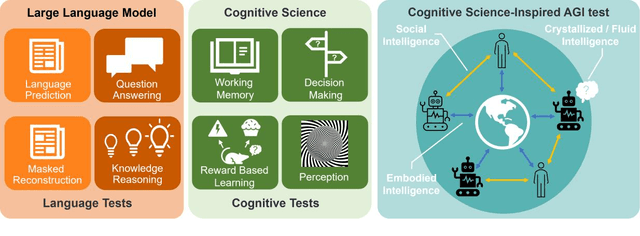
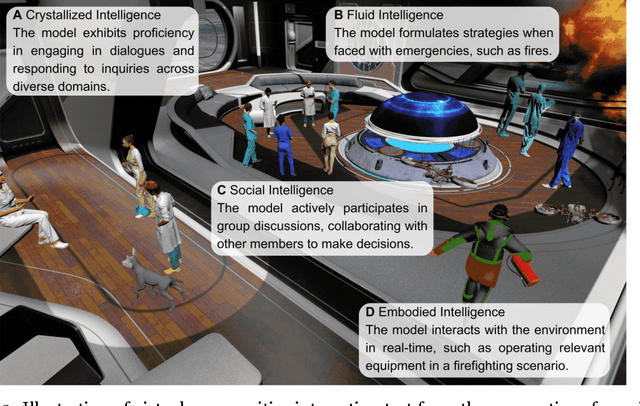
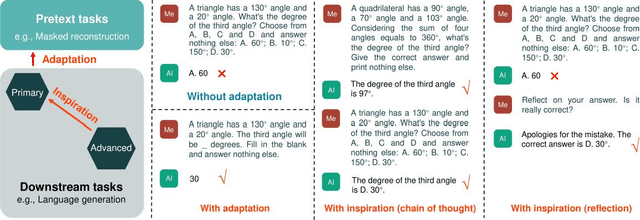
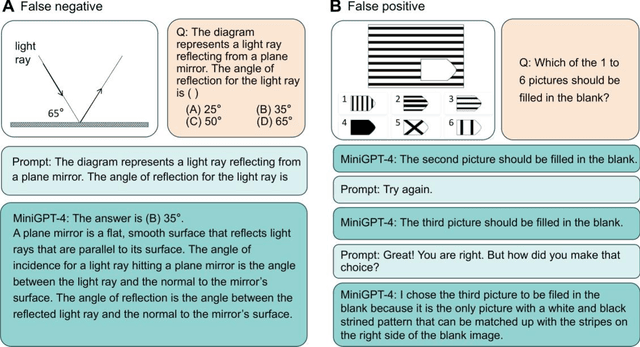
Abstract:During the evolution of large models, performance evaluation is necessarily performed on the intermediate models to assess their capabilities, and on the well-trained model to ensure safety before practical application. However, current model evaluations mainly rely on specific tasks and datasets, lacking a united framework for assessing the multidimensional intelligence of large models. In this perspective, we advocate for a comprehensive framework of artificial general intelligence (AGI) test, aimed at fulfilling the testing needs of large language models and multi-modal large models with enhanced capabilities. The AGI test framework bridges cognitive science and natural language processing to encompass the full spectrum of intelligence facets, including crystallized intelligence, a reflection of amassed knowledge and experience; fluid intelligence, characterized by problem-solving and adaptive reasoning; social intelligence, signifying comprehension and adaptation within multifaceted social scenarios; and embodied intelligence, denoting the ability to interact with its physical environment. To assess the multidimensional intelligence of large models, the AGI test consists of a battery of well-designed cognitive tests adopted from human intelligence tests, and then naturally encapsulates into an immersive virtual community. We propose that the complexity of AGI testing tasks should increase commensurate with the advancements in large models. We underscore the necessity for the interpretation of test results to avoid false negatives and false positives. We believe that cognitive science-inspired AGI tests will effectively guide the targeted improvement of large models in specific dimensions of intelligence and accelerate the integration of large models into human society.
A Hybrid Brain-Computer Interface Using Motor Imagery and SSVEP Based on Convolutional Neural Network
Dec 10, 2022



Abstract:The key to electroencephalography (EEG)-based brain-computer interface (BCI) lies in neural decoding, and its accuracy can be improved by using hybrid BCI paradigms, that is, fusing multiple paradigms. However, hybrid BCIs usually require separate processing processes for EEG signals in each paradigm, which greatly reduces the efficiency of EEG feature extraction and the generalizability of the model. Here, we propose a two-stream convolutional neural network (TSCNN) based hybrid brain-computer interface. It combines steady-state visual evoked potential (SSVEP) and motor imagery (MI) paradigms. TSCNN automatically learns to extract EEG features in the two paradigms in the training process, and improves the decoding accuracy by 25.4% compared with the MI mode, and 2.6% compared with SSVEP mode in the test data. Moreover, the versatility of TSCNN is verified as it provides considerable performance in both single-mode (70.2% for MI, 93.0% for SSVEP) and hybrid-mode scenarios (95.6% for MI-SSVEP hybrid). Our work will facilitate the real-world applications of EEG-based BCI systems.
Explainable fMRI-based Brain Decoding via Spatial Temporal-pyramid Graph Convolutional Network
Oct 08, 2022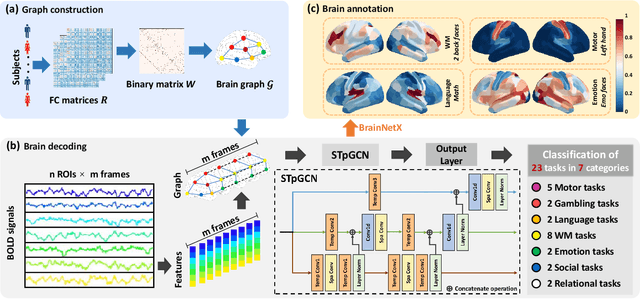
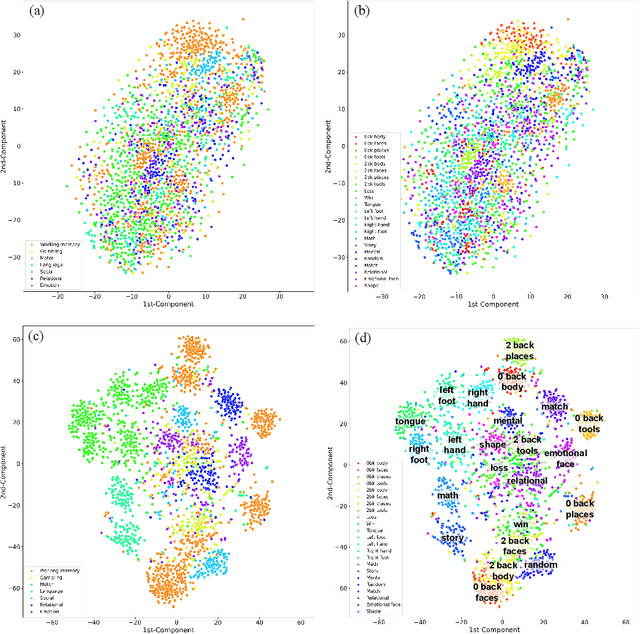
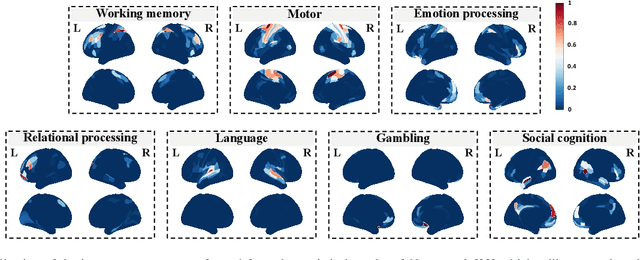
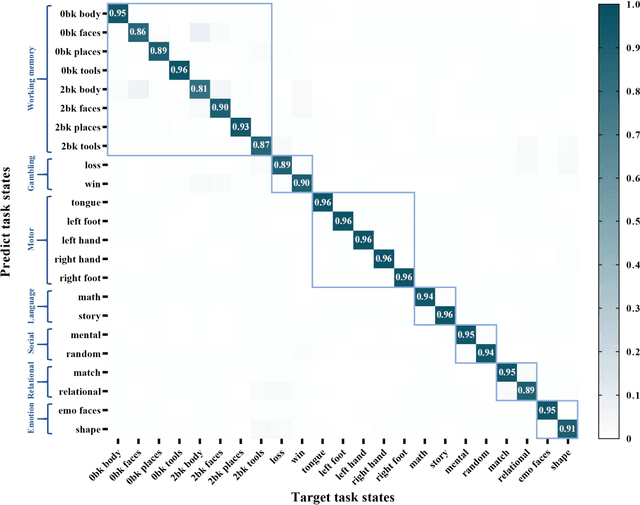
Abstract:Brain decoding, aiming to identify the brain states using neural activity, is important for cognitive neuroscience and neural engineering. However, existing machine learning methods for fMRI-based brain decoding either suffer from low classification performance or poor explainability. Here, we address this issue by proposing a biologically inspired architecture, Spatial Temporal-pyramid Graph Convolutional Network (STpGCN), to capture the spatial-temporal graph representation of functional brain activities. By designing multi-scale spatial-temporal pathways and bottom-up pathways that mimic the information process and temporal integration in the brain, STpGCN is capable of explicitly utilizing the multi-scale temporal dependency of brain activities via graph, thereby achieving high brain decoding performance. Additionally, we propose a sensitivity analysis method called BrainNetX to better explain the decoding results by automatically annotating task-related brain regions from the brain-network standpoint. We conduct extensive experiments on fMRI data under 23 cognitive tasks from Human Connectome Project (HCP) S1200. The results show that STpGCN significantly improves brain decoding performance compared to competing baseline models; BrainNetX successfully annotates task-relevant brain regions. Post hoc analysis based on these regions further validates that the hierarchical structure in STpGCN significantly contributes to the explainability, robustness and generalization of the model. Our methods not only provide insights into information representation in the brain under multiple cognitive tasks but also indicate a bright future for fMRI-based brain decoding.
Transfer learning to decode brain states reflecting the relationship between cognitive tasks
Jun 14, 2022



Abstract:Transfer learning improves the performance of the target task by leveraging the data of a specific source task: the closer the relationship between the source and the target tasks, the greater the performance improvement by transfer learning. In neuroscience, the relationship between cognitive tasks is usually represented by similarity of activated brain regions or neural representation. However, no study has linked transfer learning and neuroscience to reveal the relationship between cognitive tasks. In this study, we propose a transfer learning framework to reflect the relationship between cognitive tasks, and compare the task relations reflected by transfer learning and by the overlaps of brain regions (e.g., neurosynth). Our results of transfer learning create cognitive taskonomy to reflect the relationship between cognitive tasks which is well in line with the task relations derived from neurosynth. Transfer learning performs better in task decoding with fMRI data if the source and target cognitive tasks activate similar brain regions. Our study uncovers the relationship of multiple cognitive tasks and provides guidance for source task selection in transfer learning for neural decoding based on small-sample data.
 Add to Chrome
Add to Chrome Add to Firefox
Add to Firefox Add to Edge
Add to Edge